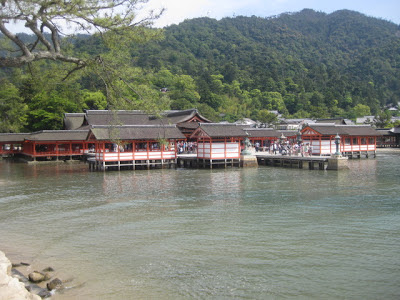The Hiroshima Peace Memorial Museum collects and displays the belongings left by the victims, photos, and other materials that convey the horror of the world's first atomic bombing of populated area on August 6, 1945.
 |
| Atomic (Genbaku) Dome |
The Hiroshima Peace Memorial (Genbaku Dome) was the only structure left standing in the area where the first atomic bomb exploded on 6 August 1945. The building was the only one left standing near the epicenter of the bomb blast, albeit in skeletal form.
Through the efforts of many people, including those of the city of Hiroshima, the build has been preserved in the same state as immediately after the bombing. Not only is it a stark and powerful symbol of the most destructive force ever created by humankind; it also expresses the hope for world peace and the ultimate elimination of all nuclear weapons.
The Peace Memorial Park, in which the Dome is the principal landmark, was laid out between 1950 and 1964. The Peace Memorial Museum in the Park was opened in 1955. Since 1952 the Park has been the scene of the Hiroshima Peace Memorial Ceremony, held annually on 6 August.
The Hiroshima Peace Memorial is a stark and powerful symbol of the achievement of world peace for more than half a century following the unleashing of the most destructive force ever created by humanity. It was preserved in that state when reconstruction of the city began. In 1966 the Hiroshima City Council adopted a resolution that the Atomic Bomb Dome should be preserved in Perpetuity.















